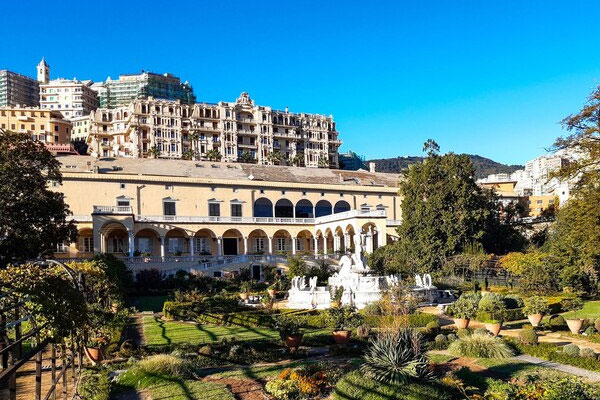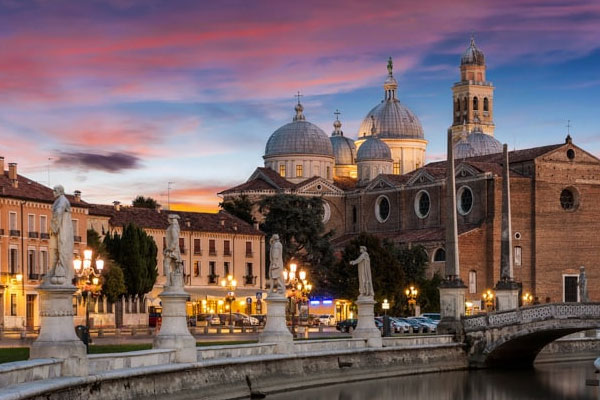Travel
What to see in Sigiriya?

What to see in Sigiriya?
Exploring the Wonders of Sigiriya or What to see in Sigiriya?
When embarking on a journey from Colombo or its surroundings, delving into the ancient history of Sri Lanka is a must, and there’s no better place to start than Sigiriya. Revered as the eighth wonder of the world, Sigiriya is a mesmerizing testament to an ancient city’s unique sights, remarkably preserved for over a millennium.
Why Sigiriya is the Eighth Wonder of the World?
Sigiriya, meaning Lion Rock, is a distinctive steep rock plateau soaring 170 meters above the ground in the heart of Sri Lanka. It boasts ancient ruins that have withstood the test of time for more than 1000 years.
The local architecture, meticulously planned fountains, lush gardens, and intricate pathways from the ancient era are a marvel to behold, earning Sigiriya its title as the eighth wonder of the world.
History of Sigiriya’s Creation
Centuries ago, Buddhist monks sought solitude in the caves of Sigiriya. Legend has it that in the fifth century AD, King Kashyapa erected a palace atop the rock to hide from enemies after usurping the throne from his brother.
The sprawling gardens surrounding the rock, adorned with the world’s first fountains, further enhanced the fortress’s grandeur. A narrow path, constantly polished to a mirror-like shine, led to the impregnable fortress. Despite the breathtaking beauty, the king’s fate was tragic as he lost a battle to his returning brother, leading to his self-inflicted demise.
Main Attractions of Sigiriya
Sigiriya offers a plethora of unique and fascinating attractions that cater to all, making it an ideal destination for families and adventurers alike.
Gardens
The journey through Sigiriya begins with lush vegetation and architectural beauty before reaching the main checkpoint. The park teems with wildlife, including squirrels, martens, elephants, and monkeys. Locals sell fruits and pastries, creating an opportunity for visitors to interact with the animals. Man-made gardens, featuring plantings on the rock and water alleys with pools and bridges, add to the enchanting journey.
Staircase – Climbing Sigiriya
One of the most striking features is the climb to the top, involving the ascent of 1200 steps. The ascent, preferably at dawn or sunset to avoid the heat, is divided into three parts: the square with frescoes, the hall of mirrors, and the direct climb to the top. The breathtaking view from the summit rewards climbers with a panoramic view of the jungle, mountains, exotic animals, and stunning sunsets.
Note: Climbers are advised to carry 1.5 liters of water per person.
Mirror Wall
The Mirror Wall, once polished for the king’s admiration, is now dusty and covered in inscriptions from various languages and periods. Despite its current state, it stands as a historical fragment in Sigiriya.
Frescoes
Sigiriya surprises visitors with extraordinary rock murals showcasing half-naked female figures. Preserved through the ages, these frescoes owe their vibrant colors to a top coating of wild bee honey mixed with egg white. Of the 500 frescoes, only 17 have endured the test of time.
Lion’s Paws
Two colossal lion paws greet visitors at Sigiriya, giving the rock its name. Originally, a lion’s face carved into the stone served as the entrance to the fortress. Though the face has eroded over time, the lion’s paws stand as a testament to the scale of the structure.
Throne
Ascending further leads to an open area resembling a throne room. Carved with astonishing precision, a smooth and even throne raises doubts about its man-made nature due to the meticulous craftsmanship.
Pool
A unique attraction is the swimming pool located above the throne hall. The pool’s flawless construction, without mortar, adds to the awe-inspiring features of Sigiriya.
Museum
Completing the Sigiriya experience, the museum offers a glimpse into the rock’s original frescoes and reproductions, carefully preserved for visitors. The entrance often sees a lively presence of monkeys, urging caution among tourists.
What to See Near Sigiriya?
The surrounding area offers additional attractions for those with more time to explore:
Pidurangala Rock: An alternative to Sigiriya, offering a lower-priced experience with a monastery in the lower reaches and a spectacular view.
Ramakele Stupa: A stupa built by King Kashyapa, though only the lower part remains, covered in moss.
Buddhist Temple: A visit to the Buddhist temple near Sigiriya with a noteworthy Buddha statue.
Other Activities in Sigiriya
Apart from the historical wonders, Sigiriya offers a range of activities:
Safari: Explore the national park and wildlife.
Souvenir Shops: Visit local shops for unique Sri Lankan souvenirs.
Tea Shops: Savor local Ceylon tea and coffee.
Market: Experience local culture and taste exotic fruits and vegetables.
Ticket Price and Working Hours
A ticket to Sigiriya costs $30, a nominal amount for an unforgettable experience. The ticket office operates from 7:00 am to 5:30 pm, with the last entry at 5:00 pm. The climb and exploration typically take around four hours.
Sigiriya Hotels
Accommodations in Sigiriya cater to various preferences, offering views of the river or cliff, with amenities like pools, kayaks, and bicycles. It is advisable to book accommodations well in advance to secure the best options.
Sigiri Saman Home Stay: Comfortable rooms with air conditioning, located near Sigiriya Rock.
Wipula-Homestay: Rooms with beautiful views, located 3 kilometers from Sigiriya Rock.
Villa Harini: A cozy option with free parking and Wi-Fi, priced at an average of $32 per night.
Flower Garden Eco Village Hotel: Among the best options, offering outdoor and indoor pools, priced at an average of $29 per night.
How to Get from Colombo to Sigiriya
The distance between Colombo and Sigiriya is approximately 150 km. Travelers can choose to drive, taking around 3 hours and 12 minutes, or opt for a bus journey from Colombo Bastian Mawatha Bus Terminal, which takes about 4 hours.
For those traveling from Kandy to Sigiriya, the distance is around 90 km. A rented car can cover the distance in approximately 95 minutes, consuming around 7 liters of gasoline.
Conclusion
In conclusion, Sigiriya stands as the eighth wonder of the world, blending historical and natural marvels in perfect harmony. With its UNESCO protection, the ancient city’s main attractions continue to captivate visitors, making it one of the most sought-after tourist destinations in Sri Lanka. Share your thoughts and views in the comments below regarding What to see in Sigiriya?
Travel
What to do in Genoa – Travel To Genoa

What to do in Genoa – Travel To Genoa
What to do in Genoa :
Genoa, often overshadowed by its more popular Italian counterparts, holds a wealth of treasures waiting to be discovered. While it may not immediately come to mind when planning an Italian adventure, this maritime city boasts a rich history as the former capital of a powerful republic and the birthplace of renowned figures like Christopher Columbus and Niccolo Paganini.
Despite its lesser-known status, it offers a unique charm and a plethora of attractions that appeal to curious travelers. So, what makes this city special, and what should you do when you visit?
Getting to Genoa
Reaching Genoa is easier than you might think. During the summer months, S7 Airlines offers direct flights, while various European carriers operate year-round flights. Alternatively, you can fly to Milan and take a short train ride to Genoa, which is only about an hour and a half away. Train travel is also an option, with direct routes available from cities like Moscow. Whether you choose to fly or take the train, Genoa is well-connected and easily accessible.
Where to Stay in Genoa
Choosing accommodation in Genoa requires some consideration, especially due to the city’s intricate layout. The historical center may seem compact, but its labyrinthine streets can be confusing to navigate, particularly with luggage. Opting for hotels near major transportation hubs like Principe and Bignoli train stations or metro stations is advisable.
For first-time visitors staying briefly, accommodations near Genova Piazza Principe offer convenience and easy access to transportation links, including the airport bus stop and cruise terminal. From luxurious hotels like the Grand Hotel Savoia to budget-friendly options such as Hotel Chopin, there’s something to suit every preference and budget.
Getting Around Genoa
Exploring Italy on foot is the best way to immerse yourself in its unique atmosphere. While the city’s narrow medieval streets may pose navigational challenges, they offer an authentic glimpse into its history and character. However, public transportation is essential for covering longer distances or navigating the city’s verticality.
Genoa boasts a metro system, buses, funiculars, and elevators integrated into the transportation network. Consider purchasing a 24-hour Genova Pass for unlimited access to public transport, excluding airport shuttles.
What to See in Genoa
Contrary to popular belief, Genoa is brimming with attractions awaiting discovery. From opulent palaces and picturesque gardens to ancient churches and world-class museums, the city offers something for every traveler. Key highlights include Ferrari Square, a grandiose civic space; the Cathedral of St. Lawrence, guarded by stone lions; and the Palazzi dei Rolli, a collection of historic palaces showcasing Genoa’s architectural splendor.
Additionally, numerous churches, including the Church of St. Peter’s and the Church of St. John, offer cultural and architectural delights. Don’t miss iconic landmarks like Villa del Principe, Lanterna lighthouse, and the medieval gate of Porta Soprano, each adding to Genoa’s allure.
Day Trips from Genoa
While Genoa itself warrants exploration, it also serves as an ideal base for day trips to nearby destinations. Along the Ligurian coast, picturesque towns like the Cinque Terre National Park, Portofino, Rapallo, and Camogli beckon with their scenic beauty and charm. Venture westward to discover hidden gems such as Noli, Finale Ligure, and Albenga, each offering its own unique allure.
Beyond the coast, explore the caves of Toirano or visit the historic town of Campo Ligure, known for its medieval castle. With so much to see and do in the surrounding area, Genoa provides an excellent starting point for exploring Liguria’s diverse attractions.
Conclusion
Genoa may not be as widely recognized as other Italian cities, but its cultural heritage, architectural marvels, and coastal beauty make it a destination worth exploring. Whether you’re strolling through its labyrinthine streets, admiring historic palaces, or embarking on day trips along the Ligurian coast, Genoa captivates visitors with its rich history and vibrant atmosphere. So, why not uncover the hidden treasures of this underrated gem on your next Italian adventure?
Travel
Things to do in Rimini Italy

Things to do in Rimini Italy
Do you know the most important Things to do in Rimini Italy? Let’s take a look
Rimini is renowned as a beach resort destination, drawing visitors from Italy and beyond with its long history of seaside hospitality. However, beyond its sandy shores lies a city steeped in ancient heritage and cultural charm, offering a wealth of attractions for travelers to discover. In this comprehensive guide, we’ll delve into everything you need to know to plan an unforgettable trip to Rimini.
Getting to Rimini
Rimini is accessible by air, land, and sea, making it convenient to reach from various parts of Italy and Europe. The city has its own international airport, Federico Fellini Airport, serving both domestic and international flights. Additionally, Rimini is well-connected by train, with direct rail links to major cities like Bologna and Ancona. For those arriving by car, highways provide easy access to Rimini from neighboring regions.
Where to Stay in Rimini
With its status as a popular resort destination, Rimini offers a wide range of accommodation options to suit every traveler’s needs and preferences. The Marina Centro area, situated in the heart of the resort district, is ideal for beachgoers seeking convenience and proximity to amenities.
Here, hotels like Erbavoglio and De Londres offer comfortable accommodations within walking distance of the beach. Alternatively, for those looking to explore the city’s historic center, hotels in the Old Town area provide easy access to landmarks like the Tempio Malatestiano and Ponte di Tiberio.
Getting Around Rimini
Navigating Rimini is relatively straightforward, with most attractions located within easy reach of the city center. Visitors staying in Marina Centro can explore the resort area on foot, while those venturing further afield can make use of public transportation options like buses and trains. Rimini’s efficient public transit system provides convenient access to key sites, including the Old Town and surrounding areas.
What to See in Rimini
Rimini boasts a rich cultural heritage, with a variety of historical and architectural landmarks waiting to be explored. In the city’s historic center, visitors can admire the impressive Tempio Malatestiano, a medieval temple converted into a cathedral, and stroll across the ancient Ponte di Tiberio, a Roman bridge dating back to the 1st century AD. For a glimpse into Italy’s cinematic history, Parco Federico Fellini offers a tribute to the renowned filmmaker with statues and exhibits celebrating his life and work.
In addition to its historical attractions, Rimini is home to modern marvels like Italia in Miniatura, a theme park featuring miniature replicas of famous Italian landmarks. Perfect for families and visitors of all ages, this unique attraction offers a fun and educational experience that showcases the country’s cultural heritage on a smaller scale.
Day Trips from Rimini
While Rimini itself offers plenty to see and do, its strategic location makes it an ideal base for exploring the surrounding region. Nearby destinations like San Marino, Santarcangelo di Romagna, and Gradara are easily accessible by car or public transportation, offering charming villages, historic sites, and picturesque landscapes to discover.
For those seeking a taste of urban culture, cities like Bologna, Ravenna, and Ancona are just a short train ride away, providing opportunities to explore their rich history, vibrant arts scene, and culinary delights.
Conclusion
From its sun-drenched beaches to its ancient landmarks and modern attractions, Rimini offers a diverse array of experiences for travelers to enjoy. Whether you’re soaking up the sun along the Adriatic coast, exploring the city’s historic center, or embarking on day trips to nearby destinations, Rimini promises a memorable and rewarding travel experience for visitors of all interests and ages.
Travel
Where to Stay in Trento Italy

Where to Stay in Trento Italy
Where to Stay in Trento, Italy :
Trento, nestled in a valley at the base of the Alps, is a city worth exploring! With its picturesque surroundings and proximity to other charming towns and attractions, Trento offers something for every traveler. Whether you plan to wander through the city streets, venture into the nearby mountains, or use Trento as a launching pad for further adventures, there’s plenty to see and do here.
Which area of Trento is best for accommodation?
Trento is relatively straightforward to navigate, with the historical city center separated from the train and bus stations by a large square. Near the station, you’ll find a tourist information kiosk where you can pick up a map of the city, or visit a nearby travel agency for assistance.
Trento offers city-wide wireless internet access, although you may need to register in advance for login credentials. It’s worth noting that temperatures can vary significantly between the city and the mountains, so be sure to pack appropriate clothing and footwear for your adventures.
The area around the train station is relatively clean and quiet, making it a convenient option for those planning to explore the region using public transportation. Hotels near the station, such as the Grand Hotel Trento and Hotel America, offer comfortable accommodations at slightly lower prices compared to those in the city center. These hotels provide easy access to both the station and the historical center of Trento, which is just a short walk away.
Speaking of the city center, Trento’s historical district is relatively compact, making it easy to explore on foot. When choosing a hotel in this area, focus on factors such as cost and traveler reviews rather than proximity to specific attractions, as most hotels are within walking distance of the main sights.
Keep in mind that older buildings in the city center may lack amenities like elevators and spacious bathrooms, but they often offer charm and character in abundance.
Hotels such as Hotel Venezia and Hotel Aquila D’Oro offer comfortable accommodations in the heart of Trento’s city center. While some rooms may offer views of the city or nearby landmarks, be prepared for the possibility of street noise, especially in the mornings. Alternatively, Albergo Accademia provides spacious designer rooms with amenities like jacuzzis, although guests may prefer rooms facing the quieter courtyard.
For those seeking a more independent accommodation option, apartments can be a great choice. Borgo Rossi Apartments, located near Piazza Venezia, offer kitchenettes and dining areas, allowing guests to prepare their meals and experience local cuisine firsthand. Be sure to communicate with the apartment owners or managers ahead of time to clarify details like heating and air conditioning availability, parking options, and key pickup procedures.
Conclusion
In conclusion, Trento offers a range of accommodation options to suit every traveler’s needs and preferences. Whether you choose to stay near the train station for convenience or in the heart of the city center for easy access to attractions, you’re sure to enjoy your time exploring this charming Italian city.
-

 Travel9 months ago
Travel9 months agoBest Spinning Rod for Bass 2024
-

 Technology9 months ago
Technology9 months agoBest Lure for Trout 2024
-

 Travel9 months ago
Travel9 months agoBest Hunting and Fishing Clothing 2024
-

 Travel9 months ago
Travel9 months agoBest Robot Vacuum Cleaners 2024
-

 Technology9 months ago
Technology9 months agoBest Floats for Night Fishing
-

 News6 months ago
News6 months agoValentine’s Deals
-

 Technology9 months ago
Technology9 months agoBest Twisters for Fishing 2024
-

 Travel9 months ago
Travel9 months agoBest Spinning Fishing Reels for Bass 2024



















